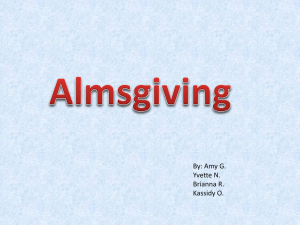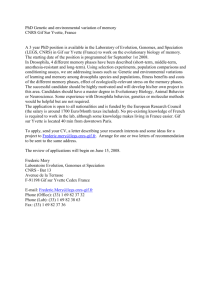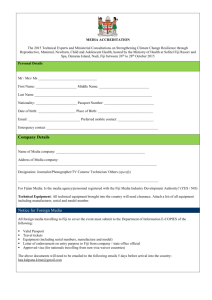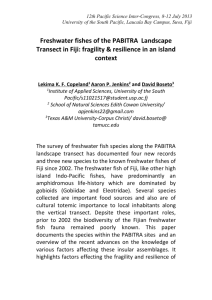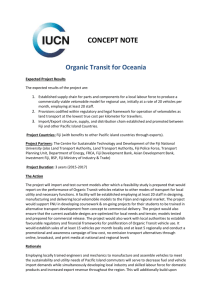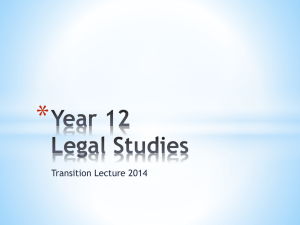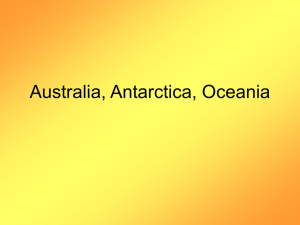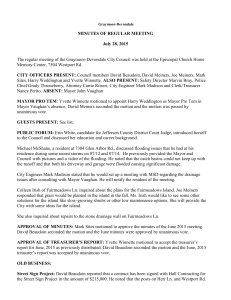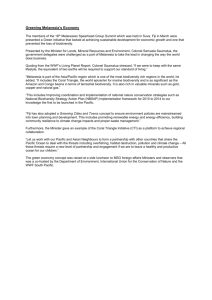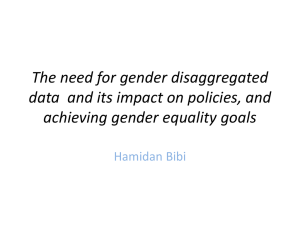Visiting Arts Project
advertisement
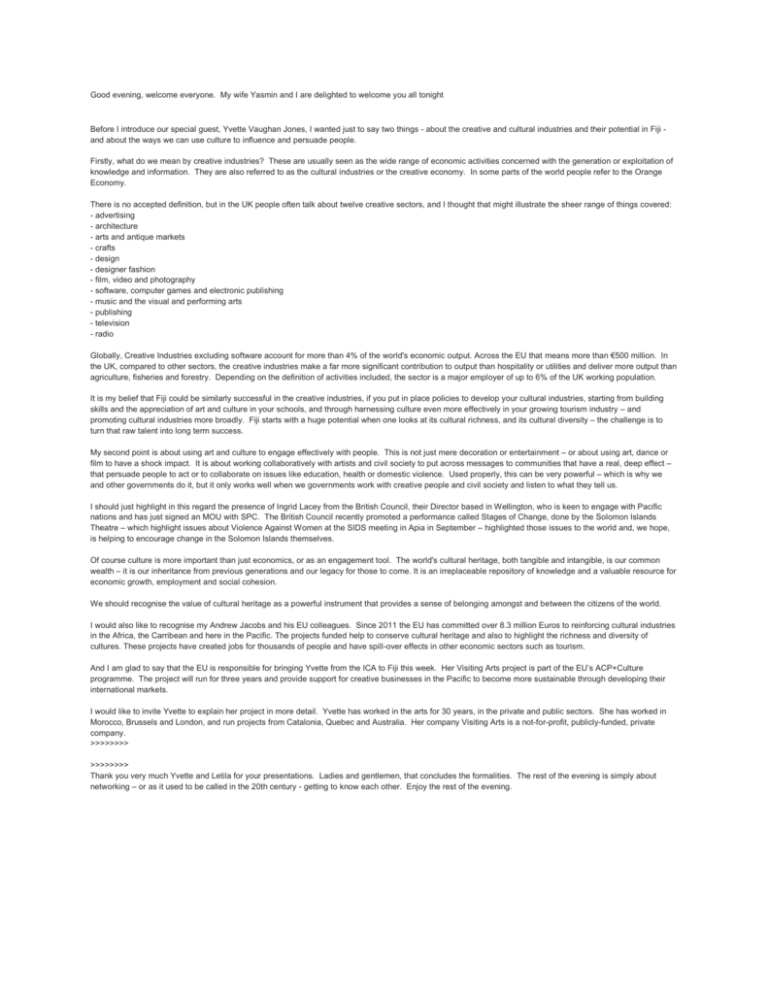
Good evening, welcome everyone. My wife Yasmin and I are delighted to welcome you all tonight Before I introduce our special guest, Yvette Vaughan Jones, I wanted just to say two things - about the creative and cultural industries and their potential in Fiji and about the ways we can use culture to influence and persuade people. Firstly, what do we mean by creative industries? These are usually seen as the wide range of economic activities concerned with the generation or exploitation of knowledge and information. They are also referred to as the cultural industries or the creative economy. In some parts of the world people refer to the Orange Economy. There is no accepted definition, but in the UK people often talk about twelve creative sectors, and I thought that might illustrate the sheer range of things covered: - advertising - architecture - arts and antique markets - crafts - design - designer fashion - film, video and photography - software, computer games and electronic publishing - music and the visual and performing arts - publishing - television - radio Globally, Creative Industries excluding software account for more than 4% of the world's economic output. Across the EU that means more than €500 million. In the UK, compared to other sectors, the creative industries make a far more significant contribution to output than hospitality or utilities and deliver more output than agriculture, fisheries and forestry. Depending on the definition of activities included, the sector is a major employer of up to 6% of the UK working population. It is my belief that Fiji could be similarly successful in the creative industries, if you put in place policies to develop your cultural industries, starting from building skills and the appreciation of art and culture in your schools, and through harnessing culture even more effectively in your growing tourism industry – and promoting cultural industries more broadly. Fiji starts with a huge potential when one looks at its cultural richness, and its cultural diversity – the challenge is to turn that raw talent into long term success. My second point is about using art and culture to engage effectively with people. This is not just mere decoration or entertainment – or about using art, dance or film to have a shock impact. It is about working collaboratively with artists and civil society to put across messages to communities that have a real, deep effect – that persuade people to act or to collaborate on issues like education, health or domestic violence. Used properly, this can be very powerful – which is why we and other governments do it, but it only works well when we governments work with creative people and civil society and listen to what they tell us. I should just highlight in this regard the presence of Ingrid Lacey from the British Council, their Director based in Wellington, who is keen to engage with Pacific nations and has just signed an MOU with SPC. The British Council recently promoted a performance called Stages of Change, done by the Solomon Islands Theatre – which highlight issues about Violence Against Women at the SIDS meeting in Apia in September – highlighted those issues to the world and, we hope, is helping to encourage change in the Solomon Islands themselves. Of course culture is more important than just economics, or as an engagement tool. The world's cultural heritage, both tangible and intangible, is our common wealth – it is our inheritance from previous generations and our legacy for those to come. It is an irreplaceable repository of knowledge and a valuable resource for economic growth, employment and social cohesion. We should recognise the value of cultural heritage as a powerful instrument that provides a sense of belonging amongst and between the citizens of the world. I would also like to recognise my Andrew Jacobs and his EU colleagues. Since 2011 the EU has committed over 8.3 million Euros to reinforcing cultural industries in the Africa, the Carribean and here in the Pacific. The projects funded help to conserve cultural heritage and also to highlight the richness and diversity of cultures. These projects have created jobs for thousands of people and have spill-over effects in other economic sectors such as tourism. And I am glad to say that the EU is responsible for bringing Yvette from the ICA to Fiji this week. Her Visiting Arts project is part of the EU’s ACP+Culture programme. The project will run for three years and provide support for creative businesses in the Pacific to become more sustainable through developing their international markets. I would like to invite Yvette to explain her project in more detail. Yvette has worked in the arts for 30 years, in the private and public sectors. She has worked in Morocco, Brussels and London, and run projects from Catalonia, Quebec and Australia. Her company Visiting Arts is a not-for-profit, publicly-funded, private company. >>>>>>>> >>>>>>>> Thank you very much Yvette and Letila for your presentations. Ladies and gentlemen, that concludes the formalities. The rest of the evening is simply about networking – or as it used to be called in the 20th century - getting to know each other. Enjoy the rest of the evening.
